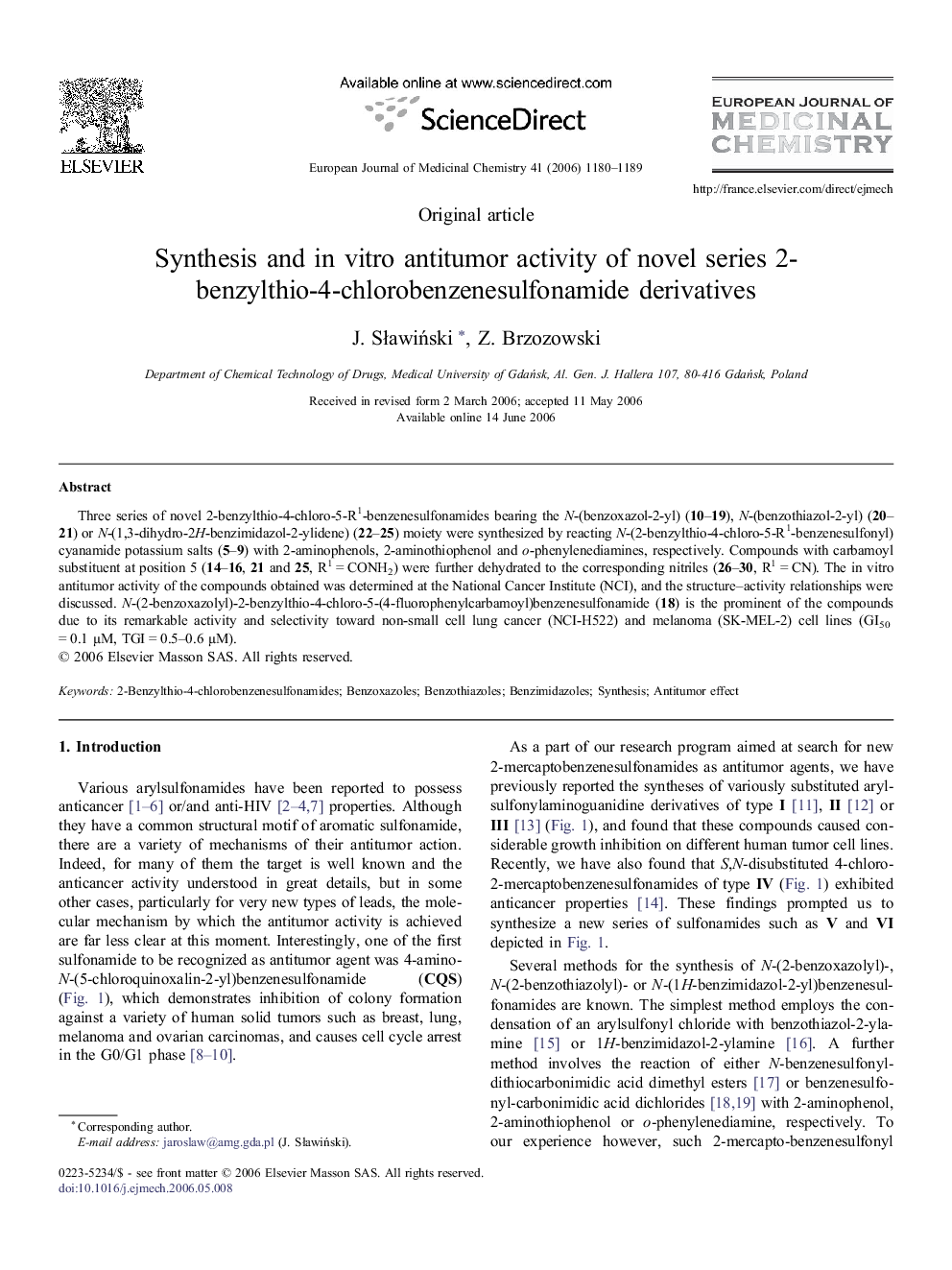| Article ID | Journal | Published Year | Pages | File Type |
|---|---|---|---|---|
| 1399983 | European Journal of Medicinal Chemistry | 2006 | 10 Pages |
Three series of novel 2-benzylthio-4-chloro-5-R1-benzenesulfonamides bearing the N-(benzoxazol-2-yl) (10–19), N-(benzothiazol-2-yl) (20–21) or N-(1,3-dihydro-2H-benzimidazol-2-ylidene) (22–25) moiety were synthesized by reacting N-(2-benzylthio-4-chloro-5-R1-benzenesulfonyl)cyanamide potassium salts (5–9) with 2-aminophenols, 2-aminothiophenol and o-phenylenediamines, respectively. Compounds with carbamoyl substituent at position 5 (14–16, 21 and 25, R1 = CONH2) were further dehydrated to the corresponding nitriles (26–30, R1 = CN). The in vitro antitumor activity of the compounds obtained was determined at the National Cancer Institute (NCI), and the structure–activity relationships were discussed. N-(2-benzoxazolyl)-2-benzylthio-4-chloro-5-(4-fluorophenylcarbamoyl)benzenesulfonamide (18) is the prominent of the compounds due to its remarkable activity and selectivity toward non-small cell lung cancer (NCI-H522) and melanoma (SK-MEL-2) cell lines (GI50 = 0.1 μM, TGI = 0.5–0.6 μM).
Graphical abstractThree series of novel 2-benzylthio-4-chlorobenzenesulfonamides bearing the N-(benzoxazol-2-yl), N-(benzothiazol-2-yl) or N-(1,3-dihydro-2H-benzimidazol-2-ylidene) moiety were synthesized, and evaluated for their in vitro antitumor activity. Compound 18 showed the most promising activity.Figure optionsDownload full-size imageDownload as PowerPoint slide
